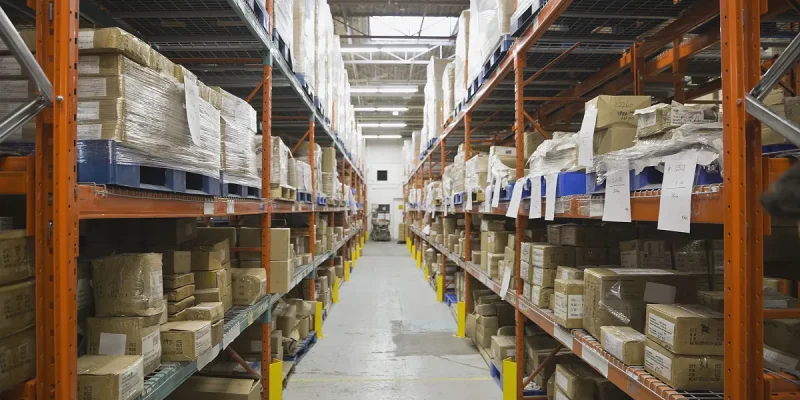Excess and Obsolete Inventory: Causes, Risks, and How to Manage It

If your business manages physical products, you’ve likely run into excess and obsolete inventory—commonly known as E&O inventory. These are the slow-moving or unsellable items that take up valuable space, tie up capital, and quietly eat away at your profits.
In this guide, we’ll explain what excess and obsolete inventory is, why it happens, and most importantly—how to prevent and reduce it.
What Is Excess and Obsolete Inventory?
Excess inventory refers to items that exceed current demand or forecasted usage.
Obsolete inventory includes products that are no longer sellable due to expiry, changes in demand, design updates, or discontinued status.
Together, these categories make up E&O inventory, which can severely impact your cash flow, warehouse efficiency, and financial statements.
Why Excess and Obsolete Inventory Matters
Here’s why addressing E&O inventory is critical:
- Ties up working capital in unsellable stock
- Wastes warehouse space and increases storage costs
- Decreases inventory turnover and distorts forecasting
- Obsolete goods may expire, degrade, or become non-compliant
- Impacts financial health with write-offs or markdowns
In short, E&O inventory erodes profit margins and weakens your supply chain responsiveness.
Common Causes of Excess & Obsolete Inventory
Understanding the root causes helps prevent future issues. Here are some of the most frequent culprits:
| Cause | Description |
| Poor Forecasting | Overestimating demand leads to overproduction or overordering |
| Slow-Moving Products | Some SKUs simply don’t sell as fast as expected |
| Product Changes | Design, packaging, or component updates can render inventory outdated |
| Bulk Purchases | Buying in bulk for discounts often leads to overstock |
| Seasonal Demand | Overstocking seasonal items can leave unsellable leftovers |
| Lack of Inventory Visibility | Inaccurate tracking and poor data lead to unnoticed excess |
How to Manage and Reduce E&O Inventory
Improve Demand Forecasting
Use data analytics and historical sales to predict demand more accurately. Integrate real-time data from sales, marketing, and seasonality.
Perform Regular Inventory Audits
Schedule periodic reviews of your inventory. Use ABC analysis to prioritize fast vs slow-moving items.
Implement FIFO or FEFO
Use First-In-First-Out (FIFO) or First-Expiry-First-Out (FEFO) systems to avoid product expiration and minimize obsolescence.
Tighten Purchasing Controls
Limit auto-reorders and avoid bulk buys unless backed by strong sales data. Coordinate with suppliers for just-in-time inventory.
Liquidate or Repurpose
Sell excess inventory through:
- Discount channels or flash sales
- B2B liquidation marketplaces
- Donations for tax write-offs
- Reuse or repurpose into new SKUs
Write Down or Write Off
If all else fails, account for inventory write-downs or write-offs to clean your books and reduce inflated asset values.
Best Practices to Prevent E&O Inventory
- Integrate inventory management with ERP systems
- Align sales, procurement, and warehouse teams
- Set reorder points and safety stock levels
- Segment SKUs by demand and lifecycle stage
- Track inventory KPIs: turnover ratio, carrying cost, and service levels
Conclusion
Excess and obsolete inventory isn’t just a storage problem—it’s a strategic risk that affects profitability, operational efficiency, and your ability to respond to market changes.
By understanding the causes and implementing proactive inventory management strategies, you can minimize E&O stock, free up capital, and drive a leaner, more responsive supply chain.
FAQs
1. What is the difference between excess and obsolete inventory?
Excess inventory exceeds forecasted demand but may still be sellable. Obsolete inventory is outdated, expired, or unsellable due to product changes or market shifts.
2. How does E&O inventory affect financial statements?
It inflates asset values, reduces profitability, and may require write-downs or write-offs, impacting both the balance sheet and income statement.
3. How do I calculate excess and obsolete inventory?
Analyze sales velocity, inventory aging reports, and SKU turnover. Items not sold within a defined period (e.g., 6-12 months) may be flagged as E&O.
4. Can I sell obsolete inventory?
Yes. You can liquidate it through discount channels, donations, or specialized B2B marketplaces, though usually at a lower value.
5. What tools help reduce E&O inventory?
Use inventory management software with forecasting, real-time tracking, and alerts. Tools like NetSuite, Zoho Inventory, or Fishbowl can improve visibility and control.
Also read: Resting Circle: 10 Transformative Ways to Recharge Your Soul











